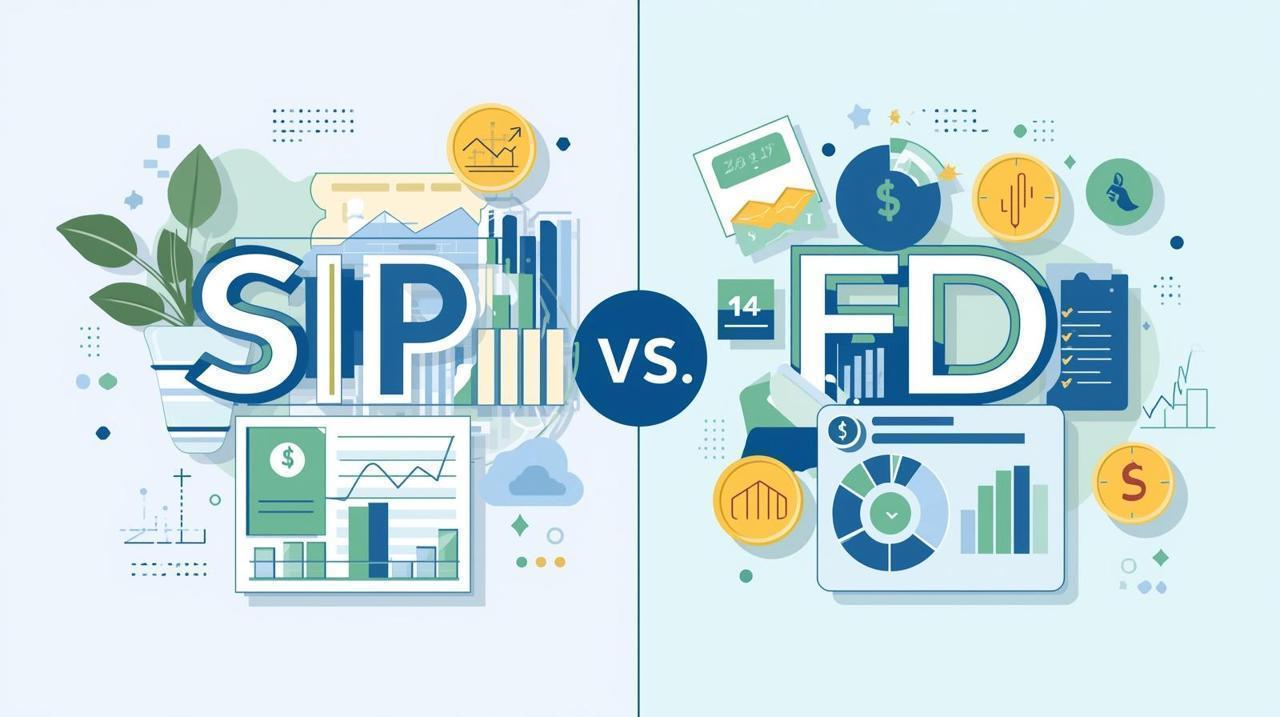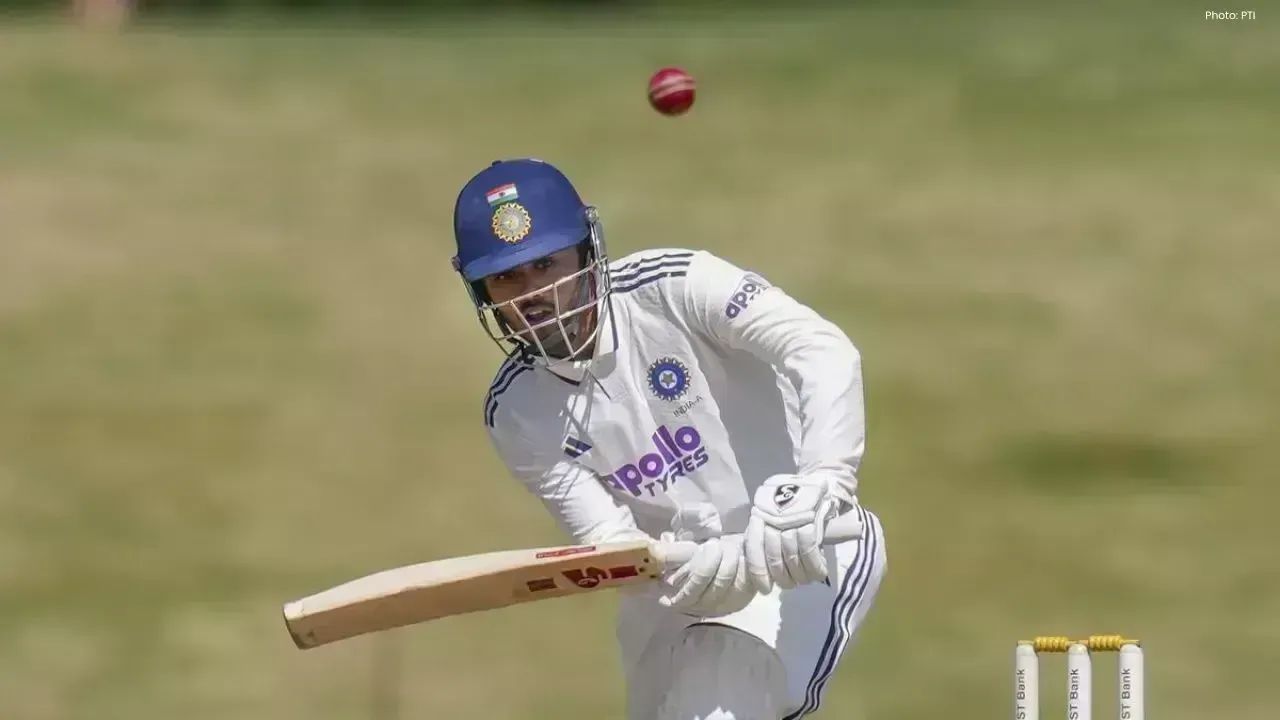
Post by : Sami Jeet
Disclaimer: This article is intended for general informational purposes and should not be considered financial advice. Always seek guidance from a licensed financial advisor.
As we enter 2026, investors are increasingly cautious and ambitious due to escalating living expenses, economic uncertainties, and a keen focus on long-term wealth management. A common dilemma arises: Is it better to invest in SIPs or Fixed Deposits (FD)?
Both investment options are widely trusted, yet serve distinctly different purposes. Selecting the right option hinges on your investment goals, risk appetite, and time frame. This comprehensive guide aims to clarify which choice aligns better with your needs in 2026.
A Systematic Investment Plan enables you to invest small sums regularly into mutual funds, facilitating gradual wealth accumulation without requiring a hefty initial investment.
SIPs operate on the principle of rupee-cost averaging, mitigating the effects of market fluctuations. When markets dip, you acquire more units; when they rise, your purchase diminishes—naturally balancing your costs.
Highlighted Features of SIP:
Designed for long-term wealth growth
Potentially higher returns than standard savings accounts
Flexible investment options
Great for young earners and long-term investors
Market-driven returns, with no guarantees
A Fixed Deposit is an investment option provided by banks and Non-Banking Financial Companies (NBFCs) that signifies a safe and assured investment. You deposit a one-time lump sum for a predefined period, and upon maturity, the bank pays a predetermined interest rate.
FDs cater to individuals prioritizing security without the volatility of market risks.
Highlighted Features of FD:
Guaranteed returns on your investment
Fixed interest rate and time frame
Stable and secure
No exposure to market risks
Generally lower returns than market-linked options
When investing, returns are often a primary concern. Here’s how SIPs and FDs stack up:
Projected Returns for SIPs (Equity Mutual Funds):
10% to 14% annually (dependent on market conditions)
Projected Returns for FDs (Banks/NBFCs):
6% to 8% annually (fixed and reliable)
Conclusion: SIPs tend to outperform in long-term return potential, whereas FDs excel in stability.
Risk Factors for SIP:
Subject to market conditions
Net Asset Values (NAV) can fluctuate
Best suited for long-term investments (5-10 years or more)
Risk Factors for FD:
Very minimal risk involved
Regulated by the RBI, ensuring safety
Ideal for conservative investors
Conclusion: FDs offer superior safety while SIPs present higher risks but likewise higher potential rewards.
SIP Liquidity:
Redemption possible at any time
Potential exit loads may apply if redeemed early
Not well-suited for short-term liquidity needs
FD Liquidity:
Early withdrawal is permitted but may incur penalties
Less flexible for regular withdrawals
Conclusion: SIPs offer greater flexibility, but FDs carry more withdrawal restrictions.
SIP Taxation:
Tax liabilities vary based on the type of fund and holding duration.
Long-term capital gains (LTCG) tax on equity funds after 1 year: 10%
Short-term capital gains (STCG): 15%
FD Taxation:
Interest income taxed according to your income bracket
TDS applies if interest exceeds set thresholds
Conclusion: SIPs are generally more tax-efficient for long-term investors.
Winner: SIP
For those looking to build substantial wealth over 5-15 years, SIPs are the preferable option.
Winner: FD
Capital protection is unmatched with FDs.
Winner: SIP
Those with long-term horizons may care less about volatility.
Winner: FD
Senior citizen FDs may offer better rates along with guaranteed stability.
Winner: FD
Given SIP returns can vary significantly in shorter time frames.
Winner: SIP
Equity SIPs generally perform better against inflation in the long-term.
Your investment choice should consider:
Your tolerance for risk
Your financial aspirations
Your duration for investment
Your liquidity requirements
Your comfort with market changes
Optimal Strategy for 2026:
Financial experts advise a blended strategy—opt for both SIPs and FDs.
FDs provide security, while SIPs yield growth, resulting in a well-rounded investment portfolio.
There’s no singularly "best" investment; the right choice depends on your unique financial circumstances and goals.
If you seek growth with some risk, SIP is likely your better choice for 2026.
For those valuing stability and confirmed returns, FD is the favorable option.
And for those in pursuit of balance, pursue a combination of both.










Duke Triumphs Thanks to Cameron Boozer's 35-Point Showcase Against Arkansas
Duke secures an 80-71 victory over Arkansas as Cameron Boozer scores 35 points, celebrating Thanksgi

Palash Muchhal's Health Update Following Wedding Stress Incident
Palash Muchhal has been discharged after being hospitalized due to a stress-related issue from his w

Ajay Devgn Reflects on 28 Years Since Ishq’s Release
Ajay Devgn marks 28 years of Ishq with heartfelt memories and celebrates the impact the film had on

Saudi Arabia Set to Launch Women's World T20 Challenge in 2026
Starting in 2026, Saudi Arabia will host its first women's professional cricket tournament, featurin

Ayush Mhatre Appointed Captain of India for Under-19 Asia Cup in Dubai
The BCCI announces Ayush Mhatre as captain for the Under-19 Asia Cup starting December 12, highlight

Virat Kohli Visits MS Dhoni's Home in Ranchi Ahead of ODI
Kohli's visit to Dhoni's home sparks excitement among fans in Ranchi before the India–South Africa O